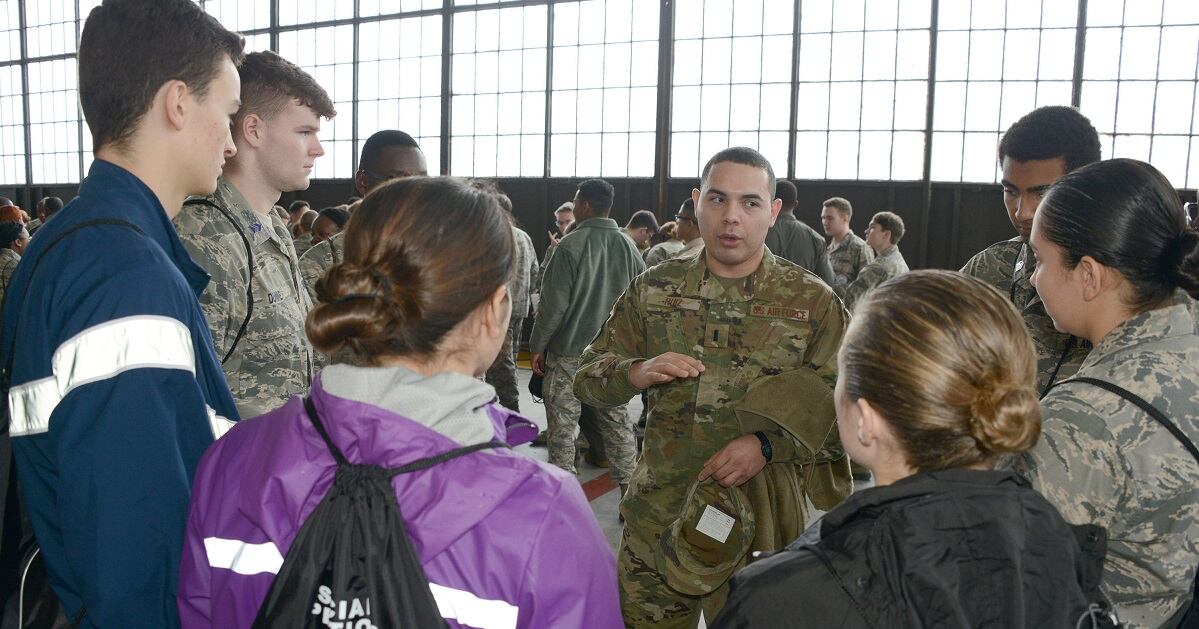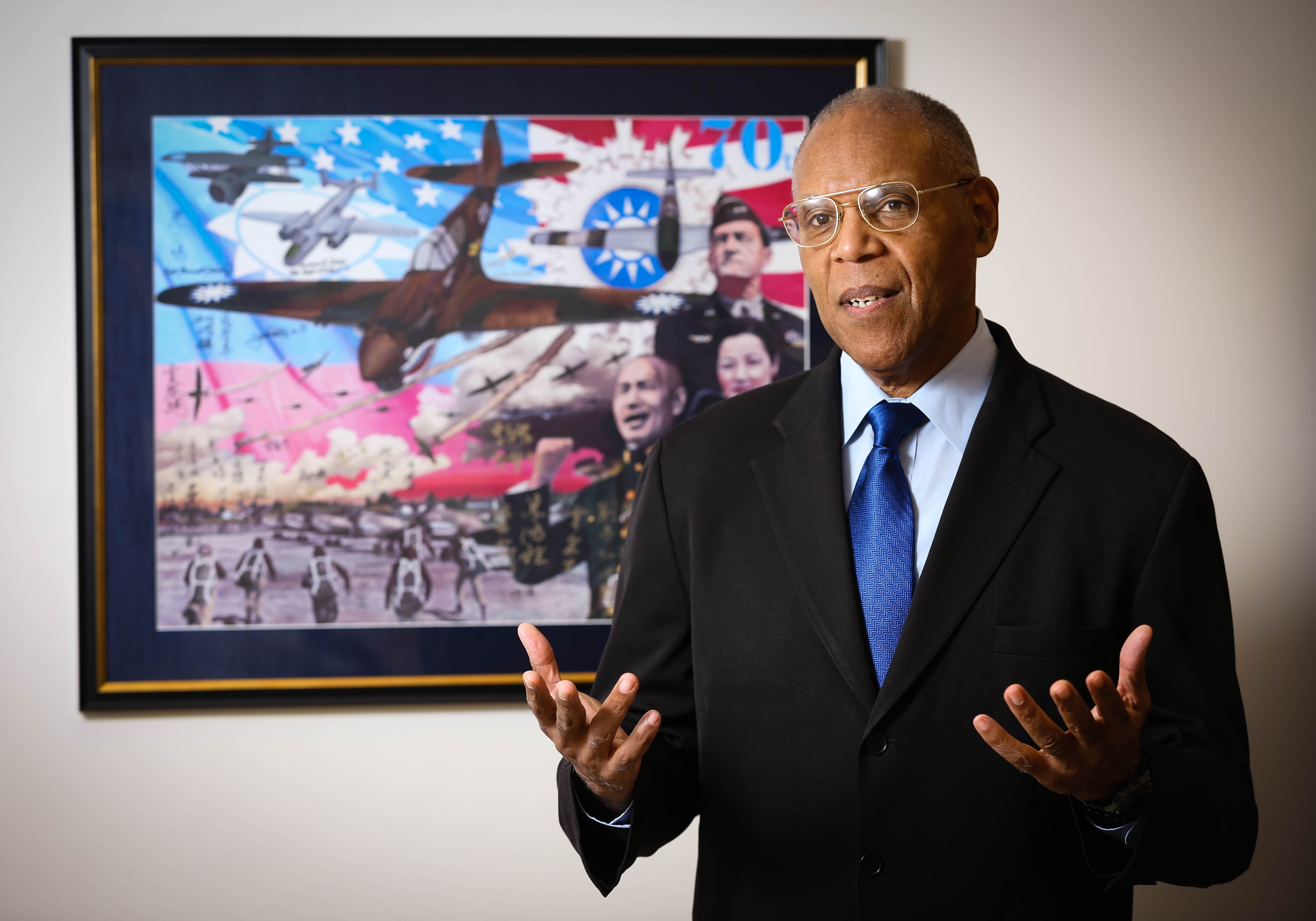The Air Force is setting targets for improving the diversity of the airmen it recruits in fiscal 2021 — and it particularly wants to improve the representation of minorities in the ranks of rated officers it brings in.
In a Monday roundtable with reporters at the Air Force Association’s virtual Air, Space, Cyber conference, Air Force Recruiting Service commander Maj. Gen. Ed Thomas said the way to improve diversity in recruiting will be to deliberately target and attract high-quality candidates.
But, Thomas stressed, these targets will not be quotas, and the Air Force won’t be lowering the bar to meet those goals.
“We’re basically employing one of the old management axioms that what gets measured, gets done,” Thomas said. “We’re talking about fishing in the right places, being able to attract those people who might not be interested or propensed, and convince them that the U.S. Air Force or the U.S. Space Force is a great way of life. And go out and meet them on their own ground, where they live, study, recreate — with people who look like them, who have similar stories they can relate to and understand that this is a good place to be.”
The Air Force has sought to improve its diversity in recent years. But the effort has become increasingly focused this year in the wake of the death of George Floyd, a Black man who died in the custody of Minneapolis police, and the national reckoning with issues of racism and inclusion that has followed.
It wouldn’t be legal or productive to hold recruiters accountable for bringing in a certain number of recruits from various demographic groups, Thomas said. But if the Air Force sees that it’s not hitting its targets on recruiting in those categories, it will adjust its marketing efforts or areas it’s concentrating on for recruiting to get a more representative balance.
The Space Force will share the same targets for the more than 300 space operators it expects to bring on next year, Thomas said.
The Air Force will be tracking how many men and women it brings in, as well as how many recruits are white, Black, Hispanic, Asian American, Native American or members of another ethnic group.

Diversity among Air Force pilots is especially important because that’s where the Air Force draws most of its senior leadership, Thomas said.
But it’s also one of the least diverse communities in the Air Force. Thomas said that 86 percent of the rated force is made up of white men, and less than 3 percent of pilots are women.
RELATED

Thomas said the Air Force is seeing progress in improving the diversity of its rated officers. Four years ago, he said, 9.2 percent of people selected to be rated officer candidates at Officer Training School were women, but that percentage has steadily increased and has now more than doubled to 19.2 percent. But, he stressed, more work remains to be done.
The Recruiting Service brings on some new officers through Officer Training School, but most officers come in through the Air Force Academy and Air Force ROTC, Thomas said, which are working with recruiting on the diversity effort.
The enlisted side is more diverse, but also has room to improve, Thomas said. This year, 17.4 of enlisted recruits are Black, he said, well over the 10 percent of the qualified applicant pool that is Black. But only 4.3 percent of enlisted recruits are Asian American — less than half of the 9.1 percent of the qualified applicant pool from that demographic.
Two years ago, AFRS set up a unit called Detachment 1 and charged it with coming up with new and innovative recruiting programs, and to inspire young people and those who influence them to consider careers in the Air Force.
Lt. Col. Annie Driscoll, an HH-60 helicopter pilot and commander of AFRS Detachment 1, said at the roundtable that her detachment wants to “restore the luster of aviation amongst America’s youth,” and talk to them about what a path to getting their pilot’s wings might look like for them.
“We do this through engagement and education,” said Driscoll, whose call sign is Sunshine. “We do this with a diverse team who gets out in front of America’s youth, parents, coaches, teachers, and we just share our experiences.”
“We bring very specific teams so that people can look out from the audience and see someone who looks like them,” Driscoll continued. “We want them to hear a story that they can identify with. And we want to inspire them with stories of what the Air Force has done for all of our lives.”
Detachment 1 also shows young people examples of airmen who have overcome adversity — perhaps the same kind of adversity they themselves are struggling with — to pursue careers in the Air Force, she said.
The Air Force this year partnered with Women in Aviation International on their Girls in Aviation Day event Sept. 26, Driscoll said. Because of the COVID-19 pandemic, Women in Aviation is releasing an app as part of that event that will share the stories of notable women who are aviators, from general officers to lieutenants.
Stephen Losey is the air warfare reporter for Defense News. He previously covered leadership and personnel issues at Air Force Times, and the Pentagon, special operations and air warfare at Military.com. He has traveled to the Middle East to cover U.S. Air Force operations.




